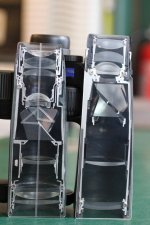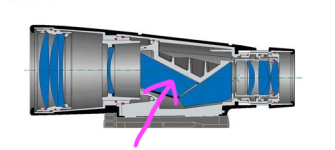kimmik
Well-known member

Ah yes thats an interesting name. I see it shows up on google patents. The roof section is called Amici prism, so I guess the combo could be called Ludewig-Amici.Ludewig prism used in the Leitz Amplivid
Will PM you shortly.Can you provide some more info, images
Using the prism diagram - observe which surfaces perform both reflection and transmission.How do you figure that so many surfaces of SP or U prisms (the ones that actually do have TIR) have AR coatings
The S-P image is a well known one from Swarovski.
John has corrected me - there are different variants of the SP prism, and roof can be placed on either the Schmidt or the Pechan half of the assembly. It seems Schmidt roof is the more common configuration.
Hmm no longer able to edit original post.Would you be able to show the difference between a Porro 1 and a Porro 2 binocular?
I suppose the difference would be 2 additional pure transmission surfaces, unless it gets all cemented together. Slightly more compact than the regular porro.
Maybe FL will turn out longer lasting than the the ones that came before it."Casing in fibre glass-reinforced polymer for exceptional ruggedness and minimum weight"
Last edited:









